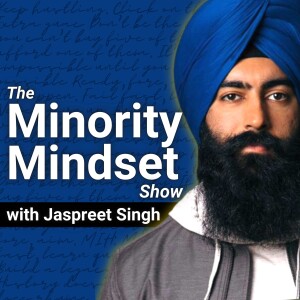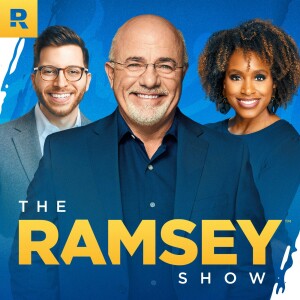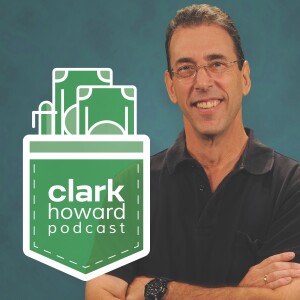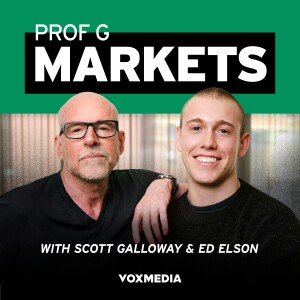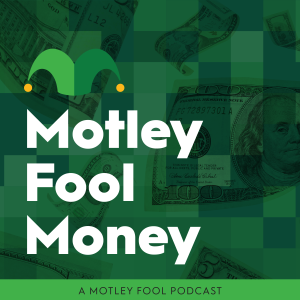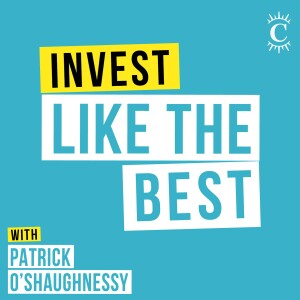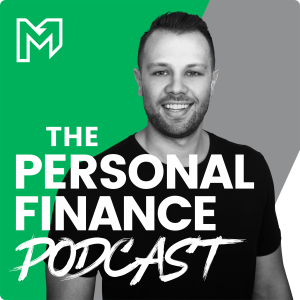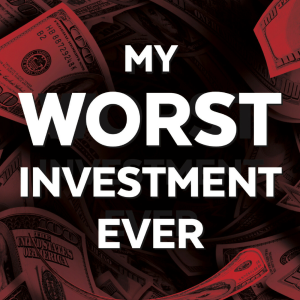

My Worst Investment Ever Podcast
https://feeds.captivate.fm/myworstinvestmentever/Episode List
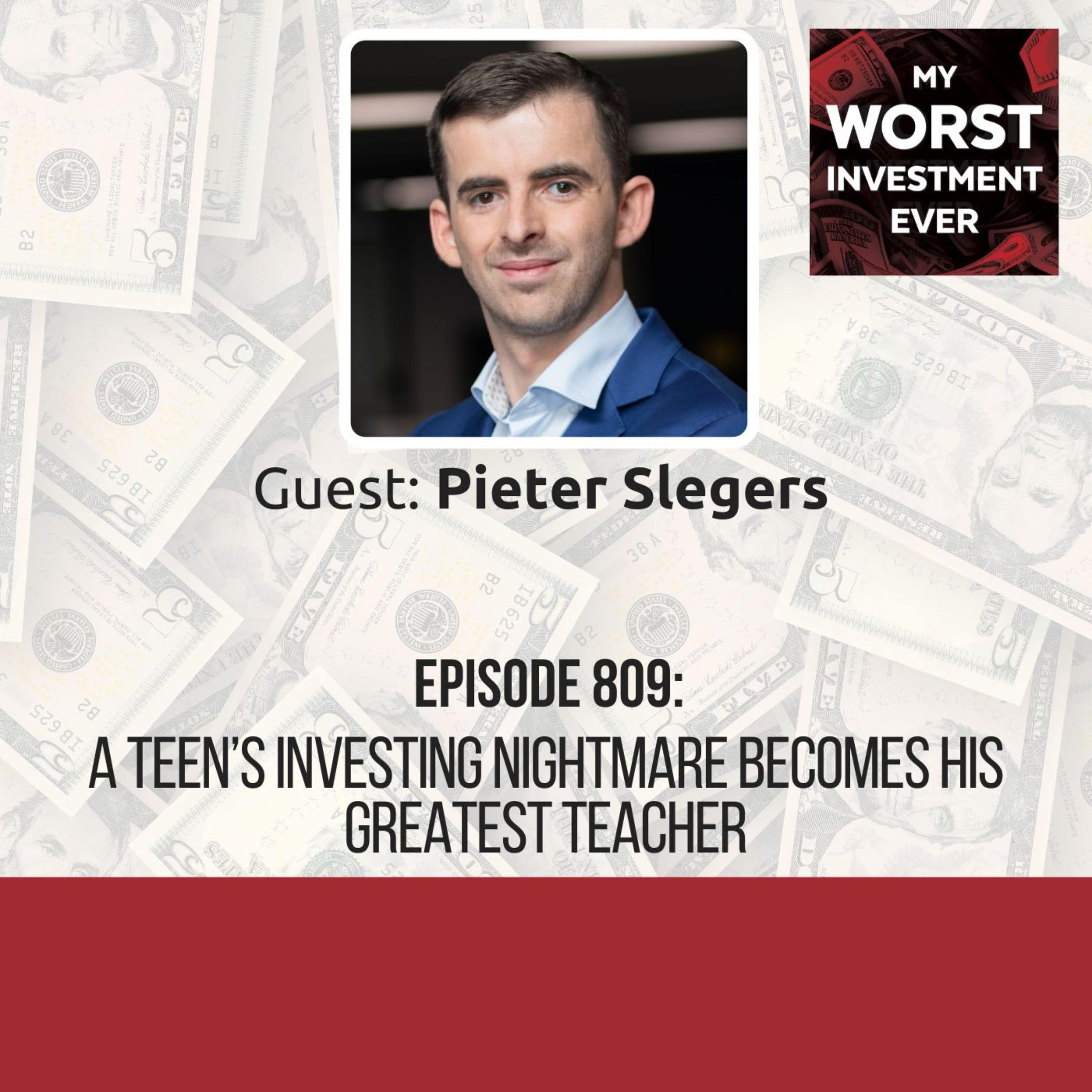
Pieter Slegers – A Teen’s Investing Nightmare Becomes His Greatest Teacher
BIO: Pieter Slegers is the founder of Compounding Quality Newsletter. Pieter worked for three years as a Belgian asset manager before focusing full-time on his investment newsletter, Compounding Quality, in July 2022. Compounding Quality has over 1 million followers across social media and nearly 500,000 email subscribers. The goal of the newsletter is to help other investors by focusing on Quality Investing.STORY: At the age of 13, Peter convinced his parents to open a brokerage account. He picked the broker’s newest “hottest pick” stock—an oil/gas transport company. He invested everything, thinking the people running the company knew what they were doing. Weeks later, the 2008 financial crisis hit. Peter sold his stock after a year, taking a 60% loss.LEARNING: Small losses are better than catastrophic ones. Knowledge is your only edge. “People who invest in individual stocks will make mistakes. There’s no doubt about that, but it’s way better to make a mistake with a few hundred dollars compared to $100,000.”Pieter Slegers Guest profilePieter Slegers is the founder of Compounding Quality Newsletter. Pieter studied Financial Management at the KULeuven and graduated summa cum laude. He worked for three years as a Belgian asset manager before focusing full-time on his investment newsletter, Compounding Quality, in July 2022. Compounding Quality has over 1 million followers across social media and nearly 500,000 email subscribers. The goal of the newsletter is to help other investors by focusing on Quality Investing.Worst investment everAt the age of 13, Peter earned his first paycheck by stocking shelves at a supermarket. Eager to grow his savings, he persuaded his parents to open a brokerage account (a feat for minors in Belgium).Despite his lack of investing knowledge, he diligently explored his broker’s platform for ideas. A new stock caught his eye on the broker’s “hot picks” list—an oil/gas transport company. He invested all his earnings, believing in the company’s potential.Peter didn’t conduct any research, despite his limited knowledge of oil and gas and his complete lack of investing experience. He simply trusted the “hot pick”.The crashWeeks later, the 2008 financial crisis hit. Peter sold his stock after a year, taking a 60% loss. His family was not impressed by his poor investment skills and told him that investing was akin to gambling, and he should consider working for the government instead.Pieter felt like such a failure. However, that $300 loss was his best investment. It hurt, but it taught him never to follow others blindly.Lessons learnedSmall losses are better than catastrophic ones. Losing $300 at the age of 13 beats losing $300,000 when you’re 40. Early pain builds immunity to big mistakes.Knowledge is your only edge: If you don’t understand how a company makes money, you’re gambling, not investing.Failure fuels obsession. That loss made Pieter devour investing books, 10-Ks, and financial news. Pain became his mentor.Andrew’s takeawaysAllow young investors to make mistakes with small sums (e.g., companies they understand, such as Netflix or Coca-Cola).Humility beats hubris. 90% of professional investors at Goldman Sachs underperform. What makes you different? It’s your checklists, not confidence.Read biographies, study market history, and connect patterns. Wisdom compounds like interest.Actionable adviceFor parents guiding young investors, start with brands that they are familiar with and use in their daily lives, such as Coca-Cola, Netflix, and McDonald’s. When they drink a Coke, say: “You own a piece of this.”Cap play money at 5% and limit high-risk bets to cash they can afford to lose. Encourage young investors to do their homework. If they can’t explain the business model in two sentences, they shouldn’t own it.Pieter’s recommendationsPieter recommends reading What I Learned About Investing From Darwin by Pulak Prasad if you want to perfect your investment skills. He also offers numerous free resources on CompoundingQuality.net.Learning from others’ experiences, whether through books, online resources, or personal advice, is a valuable way to improve your own investing skills.No.1 goal for the next 12 monthsPieter’s goal for the next 12 months is to continue his learning journey by reading books, listening to podcasts, and engaging in other educational activities. He understands that continuous learning is the key to successful investing.Parting words “It’s amazing what Andrew is doing. I had a lovely time. Please give him a hand, send him an email, or support him in any way you can. If people have questions for me, I’m always happy to help via combining quality.”Pieter Slegers [spp-transcript] Connect with Pieter SlegersLinkedIn WebsiteAndrew’s booksHow to Start Building Your Wealth Investing in the Stock MarketMy Worst Investment Ever9 Valuation Mistakes and How to Avoid ThemTransform Your Business with Dr.Deming’s 14 PointsAndrew’s online programsValuation Master ClassThe Become a Better Investor CommunityHow to Start Building Your Wealth Investing in the Stock MarketFinance Made Ridiculously SimpleFVMR Investing: Quantamental Investing Across the WorldBecome a Great Presenter and Increase Your InfluenceTransform Your Business with Dr. Deming’s 14 PointsAchieve Your GoalsConnect with Andrew Stotz:astotz.comLinkedInFacebookInstagramThreadsXYouTubeMy Worst Investment Ever Podcast
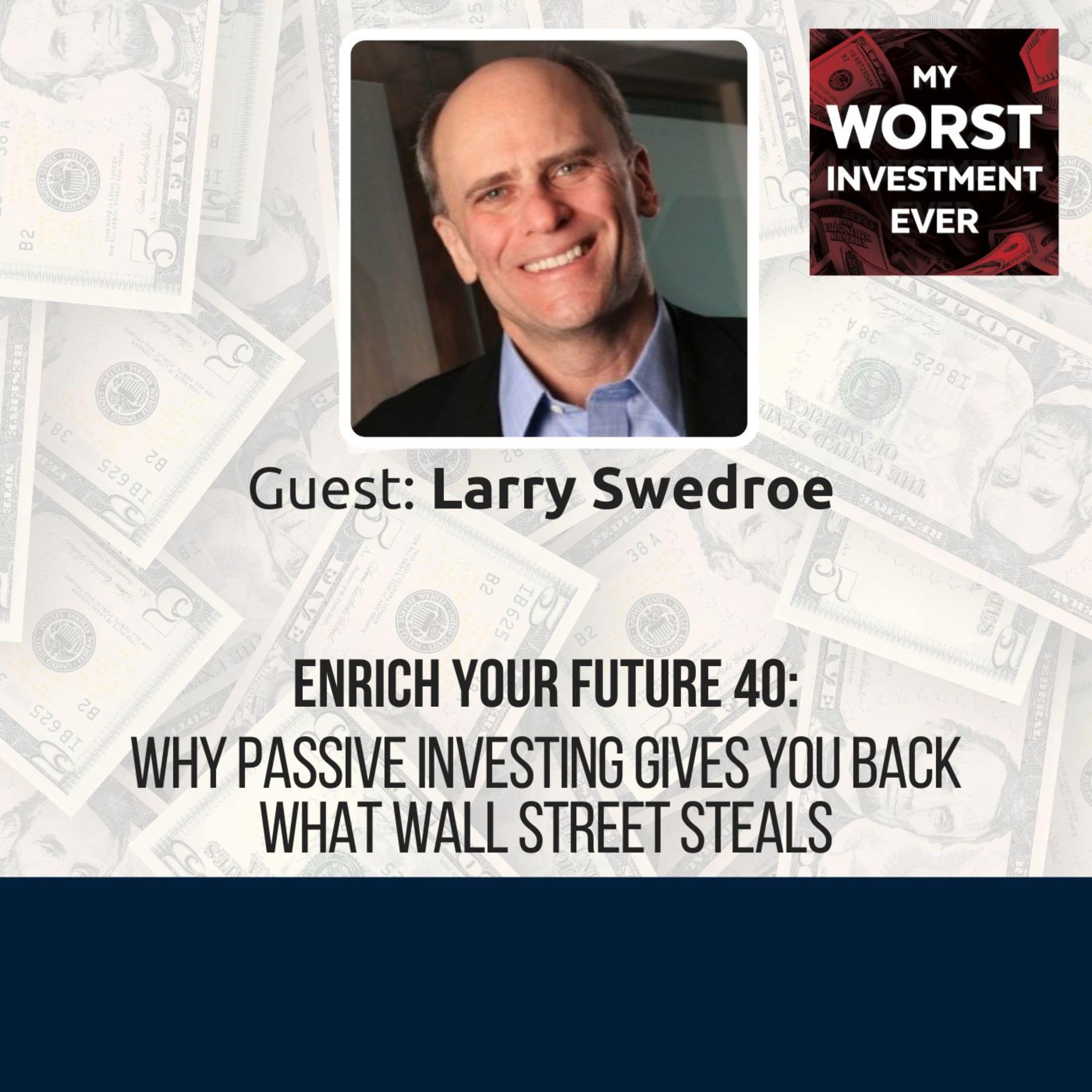
Enrich Your Future 40: Why Passive Investing Gives You Back What Wall Street Steals
In this episode of Enrich Your Future, Andrew and Larry Swedroe discuss Larry’s new book, Enrich Your Future: The Keys to Successful Investing. In this series, they discuss Chapter 40: The Big Rocks.LEARNING: Passive investing will give you the freedom you need. “Indexing and passive investing have the ‘disadvantage’ of being boring. I admit it. However, if anyone needs to get their excitement in life from investing, I’d suggest they might want to consider getting another life.”Larry Swedroe In this episode of Enrich Your Future, Andrew and Larry Swedroe discuss Larry’s new book, Enrich Your Future: The Keys to Successful Investing. The book is a collection of stories that Larry has developed over 30 years as the head of financial and economic research at Buckingham Wealth Partners to help investors. You can learn more about Larry’s Worst Investment Ever story on Ep645: Beware of Idiosyncratic Risks.Larry deeply understands the world of academic research and investing, especially risk. Today, Andrew and Larry discuss Chapter 40: The Big Rocks.Chapter 40: The Big RocksIn Chapter 40, Larry explains why passive (systematic) investing is the winning strategy in life as well as investing.Like all the other chapters in the book, this one begins with a story used as an analogy to help understand a financial issue. In this one, a time-management expert fills a mason jar with large rocks. “Full?” she asks. The class agrees. She adds gravel, sand, and water – each filling the spaces between. When a student suggests the lesson is about fitting more into busy schedules, she corrects them:“If you don’t put the big rocks in first, they’ll never fit at all.”The investor’s jarLarry explains the metaphor’s profound implication for wealth:Big rocks = Family, health, growth, legacyGravel = Stock charts, earnings analysisSand = Financial news, market commentaryWater = Trading forums, portfolio tinkeringLarry explains that active investors start with gravel and sand, leaving insufficient time for the big rocks. They spend much of their precious leisure time watching the latest business news, studying the latest charts, scanning and posting on Internet investment discussion boards, reading financial trade publications and newsletters, and so on. Their jars fill with noise, leaving no room for life’s essentials.Passive investors, on the other hand, ignore the ”noise” (the sand, the gravel, and the water) and place big rocks first. Their strategy operates quietly, driven by low-cost index funds and disciplined rebalancing. The result? Their jars hold what truly enriches life, giving them a sense of freedom and independence.Two stories, one lesson1. The physician’s regretDuring the 1990s bull market, a doctor would spend nights analyzing stocks after 12-hour shifts. He turned $10,000 into $100,000 – but his marriage was on the verge of collapse. His wife no longer had a husband; his child lost a parent to the glow of stock charts. When the tech bubble burst, the money vanished.The wake-up call was brutal: He had traded first steps and bedtime stories for digits on a screen. After reading Larry’s book, he switched to passive investing, which helped him salvage both his finances and his family. Now, he was playing the winners’ game in life and investing.2. The executive’s discoveryA Wharton MBA and corporate treasurer spent decades analyzing stocks after work. Upon adopting passive investing, he calculated a shocking truth: He wasted 6.5 weeks per year on futile research.Worse, this “gravel” wasn’t neutral – trading fees, taxes, and behavioral errors eroded returns. By eliminating the noise, he reclaimed 500+ annual hours for family and passions.Why boring is the bravest choiceLarry notes that indexing and passive investing have the ‘disadvantage’ of being boring. However, he continues, investing was never meant to be exciting despite what Wall Street and the financial media want you to believe. Investing is supposed to be about achieving your financial goals with the least amount of risk.Making the ‘boring’ choice in investing can actually be empowering, as it puts you in control and builds confidence in your financial future. Larry further explains that indexing, and passive investing in general, not only allows you to earn market returns in a low-cost and tax-efficient manner but also frees you from spending any time at all watching CNBC and reading financial publications that are essentially no more than what Jane Bryant Quinn called “investment porn.”Play a winner’s gameIf you find that you need excitement from your investments, consider setting up a separate “entertainment” account. The assets inside that account should not exceed more than a few percent of your total portfolio. Invest the rest of your assets in what I believe to be the winner’s game.Further readingPaul Samuelson, Quoted in Jonathan Burton, Investment Titans (McGraw-Hill, 2001).Did you miss out on the previous chapters? Check them out:Part I: How Markets Work: How Security Prices are Determined and Why It’s So Difficult to OutperformEnrich Your Future 01: The Determinants of the Risk and Return of Stocks and BondsEnrich Your Future 02: How Markets Set PricesEnrich Your Future 03: Persistence of Performance: Athletes Versus Investment ManagersEnrich Your Future 04: Why Is Persistent Outperformance So Hard to Find?Enrich Your Future 05: Great Companies Do Not Make High-Return InvestmentsEnrich Your Future 06: Market Efficiency and the Case of Pete RoseEnrich Your Future 07: The Value of Security AnalysisEnrich Your Future 08: High Economic Growth Doesn’t Always Mean High Stock Market ReturnEnrich Your Future 09: The Fed Model and the Money IllusionPart II: Strategic Portfolio DecisionsEnrich Your Future 10: You Won’t Beat the Market Even the Best Funds Don’tEnrich Your Future 11: Long-Term Outperformance Is Not Always Evidence of SkillEnrich Your Future 12: When Confronted With a Loser’s Game Do Not PlayEnrich Your Future 13: Past Performance Is Not a Predictor of Future PerformanceEnrich Your Future 14: Stocks Are Risky No Matter How Long the HorizonEnrich Your Future 15: Individual Stocks Are Riskier Than You BelieveEnrich Your Future 16: The Estimated Return Is Not InevitableEnrich Your Future 17: Take a Portfolio Approach to Your InvestmentsEnrich Your Future 18: Build a Portfolio That Can Withstand the Black SwansEnrich Your Future 19: The Gold Illusion: Why Investing in Gold May Not Be SafeEnrich Your Future 20: Passive Investing Is the Key to Prudent Wealth ManagementPart III: Behavioral Finance: We Have Met the Enemy and He Is UsEnrich Your Future 21: Think You Can Beat the Market? Think AgainEnrich Your Future 22: Some Risks Are Not Worth TakingEnrich Your Future 23: Seeing Through the Frame: Making Better Investment DecisionsEnrich Your Future 24: Why Smart People Do Dumb ThingsEnrich Your Future 25: Stock Crashes Happen—Be PreparedEnrich Your Future 26: Should You Invest Now or Spread It Out?Enrich Your Future 27: Pascal’s Wager: Betting on Consequences Over ProbabilitiesEnrich Your Future 28 & 29: How to Outsmart Your Investing BiasesEnrich Your Future 30: The Hidden Cost of Chasing Dividend StocksEnrich Your Future 31: Risk vs. Uncertainty: The Investor’s Blind SpotPart IV: Playing the Winner’s Game in Life and InvestingEnrich Your Future 32: Trying to Beat the Market Is a Fool’s ErrandEnrich Your Future 33: The Market Doesn’t Care How Smart You AreEnrich Your Future 34: Embrace the Bear: Why Market Crashes Are Your Silent AllyEnrich Your Future 35: Market Gurus Are Just Expensive EntertainersEnrich Your Future 36: The Madness of Crowded TradesEnrich Your Future 37 & 38: The Calendar Is a Crook & Hot Funds Are a TrapEnrich Your Future 39: More Wealth Does Not Give You More HappinessAbout Larry SwedroeLarry Swedroe was head of financial and economic research at Buckingham Wealth Partners. Since joining the firm in 1996, Larry has spent his time, talent, and energy educating investors on the benefits of evidence-based investing with an enthusiasm few can match.Larry was among the first authors to publish a book that explained the science of investing in layman’s terms, “The Only Guide to a Winning Investment Strategy You’ll Ever Need.” He has authored or co-authored 18 books.Larry’s dedication to helping others has made him a sought-after national speaker. He has made appearances on national television on various outlets.Larry is a prolific writer, regularly contributing to multiple outlets, including AlphaArchitect, Advisor Perspectives, and Wealth Management. [spp-transcript] Connect with Larry SwedroeLinkedInXWebsiteBooksAndrew’s booksHow to Start Building Your Wealth Investing in the Stock MarketMy Worst Investment Ever9 Valuation Mistakes and How to Avoid ThemTransform Your Business with Dr.Deming’s 14 PointsAndrew’s online programsValuation Master ClassThe Become a Better Investor CommunityHow to Start Building Your Wealth Investing in the Stock MarketFinance Made Ridiculously SimpleFVMR Investing: Quantamental Investing Across the WorldBecome a Great Presenter and Increase Your InfluenceTransform Your Business with Dr. Deming’s 14 PointsAchieve Your GoalsConnect with Andrew Stotz:astotz.comLinkedInFacebookInstagramThreadsX
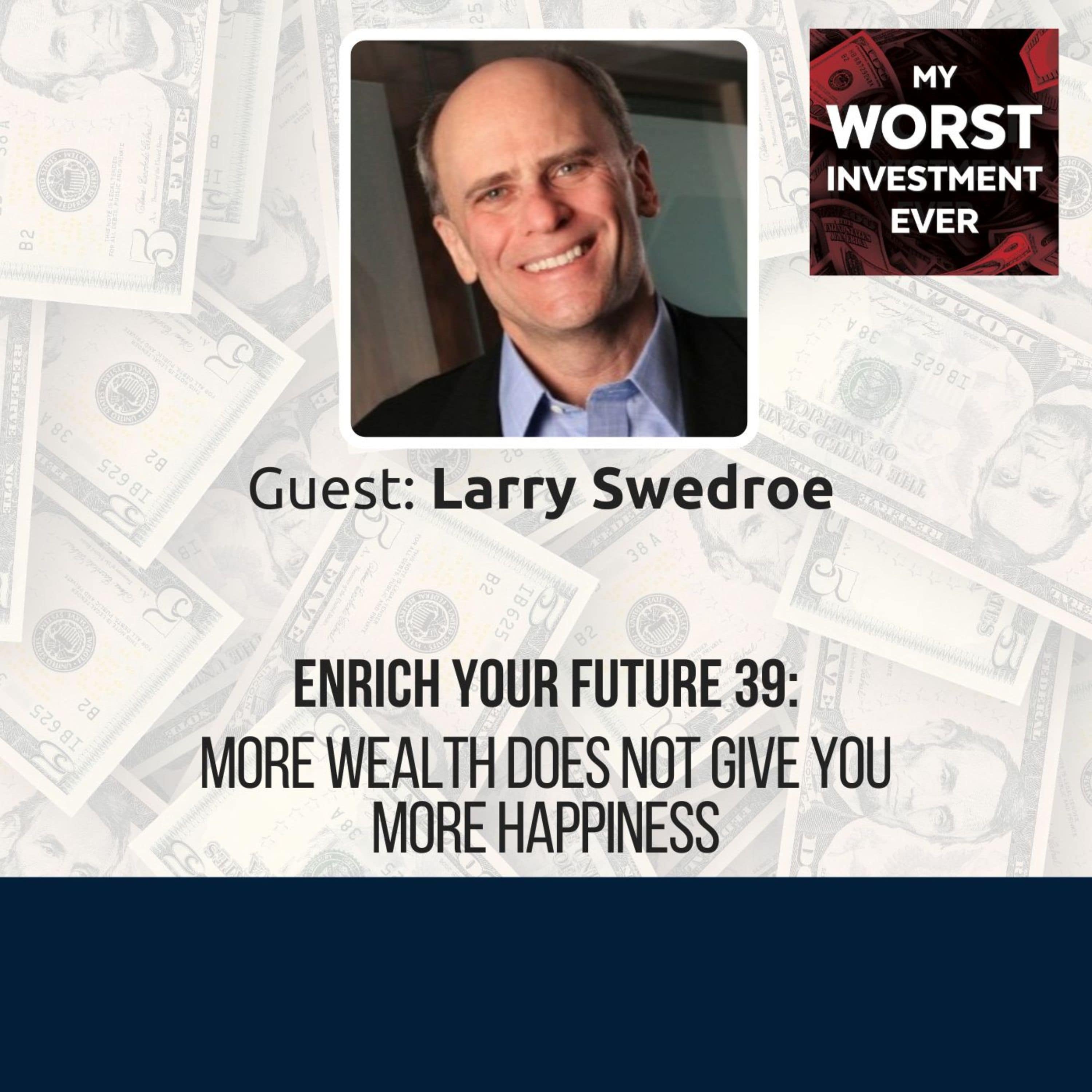
Enrich Your Future 39: More Wealth Does Not Give You More Happiness
In this episode of Enrich Your Future, Andrew and Larry Swedroe discuss Larry’s new book, Enrich Your Future: The Keys to Successful Investing. In this series, they discuss Chapter 39: Enough.LEARNING: More wealth does not give you more happiness. “Prudent investors don’t take more risk than they have the ability, willingness, or need to take. If you’ve already won the game, why are you still playing?”Larry Swedroe In this episode of Enrich Your Future, Andrew and Larry Swedroe discuss Larry’s new book, Enrich Your Future: The Keys to Successful Investing. The book is a collection of stories that Larry has developed over 30 years as the head of financial and economic research at Buckingham Wealth Partners to help investors. You can learn more about Larry’s Worst Investment Ever story on Ep645: Beware of Idiosyncratic Risks.Larry deeply understands the world of academic research and investing, especially risk. Today, Andrew and Larry discuss Chapter 39: Enough.Chapter 39: EnoughIn Chapter 39, Larry discusses the importance of knowing that you have “enough,” a concept that, once understood, can enlighten and guide your financial decisions.In 2009, Larry conducted an investment seminar for the Tiger 21 Group, America’s most exclusive wealth management group. One of the issues the group asked him to address was: How do the wealthy think about risk, and how should they approach it? Larry’s answer exposed a terrifying paradox.More wealth will not make you happierAccording to Larry, self-made wealth follows a predictable script. Fortunes are built through extreme risk-taking: betting everything on one business, ignoring diversification, and trusting instinct over analysis. This breeds a dangerous confidence—the kind that whispers, “If I did it once, I can do it again.”He explains that the utility of the wealth curve resembles an elephant from the side. It goes up quickly because when you have nothing, even a little extra money can significantly improve your life. If you’re homeless and someone gives you $25 to take a shower, get a meal, and stuff, that will make you much better off. But once you get to some level of net worth, like $2 million or $3 million, or whatever the number is for you, the extra wealth is better than less.However, as you gain more wealth, your incremental level of happiness—just like the elephant’s back— flattens out. There’s virtually little or no improvement in your state of well-being and happiness.The entrepreneur’s invisible trapLarry stresses that wealth building and wealth preservation demand opposite mindsets. Those with the greatest ability to take risks (resources to absorb losses) and willingness (confidence from past wins) often overlook the third critical factor: need. And therein lies the trap.The wealthiest individuals have a near-zero need for further risk. Yet, they continually strive for more and take on significant risks that may not ultimately lead to an enhanced level of happiness. In reality, they do not need to take such a substantial risk. They can dial down the risk in their portfolio and be much happier, sleep better, not worry about markets, and enjoy their life.When $13 million evaporatesLarry recounts meeting a couple in 2003. Three years earlier, their portfolio stood at $13 million, with a heavy concentration in tech stocks. By 2003? $3 million. An 80% collapse.“Would doubling to $26 million have changed your lives?” Larry asked.“No,” they admitted.“Then why risk everything for gains that wouldn’t matter?”Their fatal error? Never defining their “enough.” When desires—a larger yacht, a vineyard, or “legacy” projects—morph into perceived needs, they artificially inflate risk tolerance. This ignites a destructive cycle: greater “needs” demand riskier bets, which invite catastrophic losses.The science of “enough”Larry points to research that reshapes wealth psychology: Beyond $75,000 per year (adjusted for inflation), happiness plateaus. After $10 million, diminishing returns accelerate violently. The billionaire’s third home brings no more joy than a latte at the bookstore.This isn’t a theory. Psychologists confirm that true contentment comes from non-tradable assets. These are the experiences and relationships that money can’t buy. A walk in the park with your partner. Reading to grandchildren. The freedom to control your time. These cost little yet yield everything. A $100 bottle of wine? It can’t compete with a $10 one shared with friends.Breaking the cycleLarry prescribes four antidotes for Tiger 21’s members:First, ask: “If I lost 80% tomorrow, would my core lifestyle survive? Would my relationships?” If the answer chills you, you’re over-risked.Second, map your marginal utility of wealth. Draw a curve tracking wealth against life satisfaction. Where does the line flatten? That’s your “enough.” For most, it’s far lower than imagined.Third, build a “fortress portfolio.” Replace concentrated bets with global diversification. Swap illiquid moonshots for Treasury bonds and index funds. Protect capital like a museum guards its masterpieces.Fourth, demote desires. Luxury items must never masquerade as needs. That vineyard? A want—funded only if cash flows cover it without gambling capital.The unbreakable wealth paradoxLarry concludes by emphasizing that building wealth requires courage. Preserving it requires the courage to say: “No more.” The difference between the rich and the ruined isn’t intelligence—it’s knowing when you have enough.Did you miss out on the previous chapters? Check them out:Part I: How Markets Work: How Security Prices are Determined and Why It’s So Difficult to OutperformEnrich Your Future 01: The Determinants of the Risk and Return of Stocks and BondsEnrich Your Future 02: How Markets Set PricesEnrich Your Future 03: Persistence of Performance: Athletes Versus Investment ManagersEnrich Your Future 04: Why Is Persistent Outperformance So Hard to Find?Enrich Your Future 05: Great Companies Do Not Make High-Return InvestmentsEnrich Your Future 06: Market Efficiency and the Case of Pete RoseEnrich Your Future 07: The Value of Security AnalysisEnrich Your Future 08: High Economic Growth Doesn’t Always Mean High Stock Market ReturnEnrich Your Future 09: The Fed Model and the Money IllusionPart II: Strategic Portfolio DecisionsEnrich Your Future 10: You Won’t Beat the Market Even the Best Funds Don’tEnrich Your Future 11: Long-Term Outperformance Is Not Always Evidence of SkillEnrich Your Future 12: When Confronted With a Loser’s Game Do Not PlayEnrich Your Future 13: Past Performance Is Not a Predictor of Future PerformanceEnrich Your Future 14: Stocks Are Risky No Matter How Long the HorizonEnrich Your Future 15: Individual Stocks Are Riskier Than You BelieveEnrich Your Future 16: The Estimated Return Is Not InevitableEnrich Your Future 17: Take a Portfolio Approach to Your InvestmentsEnrich Your Future 18: Build a Portfolio That Can Withstand the Black SwansEnrich Your Future 19: The Gold Illusion: Why Investing in Gold May Not Be SafeEnrich Your Future 20: Passive Investing Is the Key to Prudent Wealth ManagementPart III: Behavioral Finance: We Have Met the Enemy and He Is UsEnrich Your Future 21: Think You Can Beat the Market? Think AgainEnrich Your Future 22: Some Risks Are Not Worth TakingEnrich Your Future 23: Seeing Through the Frame: Making Better Investment DecisionsEnrich Your Future 24: Why Smart People Do Dumb ThingsEnrich Your Future 25: Stock Crashes Happen—Be PreparedEnrich Your Future 26: Should You Invest Now or Spread It Out?Enrich Your Future 27: Pascal’s Wager: Betting on Consequences Over ProbabilitiesEnrich Your Future 28 & 29: How to Outsmart Your Investing BiasesEnrich Your Future 30: The Hidden Cost of Chasing Dividend StocksEnrich Your Future 31: Risk vs. Uncertainty: The Investor’s Blind SpotPart IV: Playing the Winner’s Game in Life and InvestingEnrich Your Future 32: Trying to Beat the Market Is a Fool’s ErrandEnrich Your Future 33: The Market Doesn’t Care How Smart You AreEnrich Your Future 34: Embrace the Bear: Why Market Crashes Are Your Silent AllyEnrich Your Future 35: Market Gurus Are Just Expensive EntertainersEnrich Your Future 36: The Madness of Crowded TradesEnrich Your Future 37 & 38: The Calendar Is a Crook & Hot Funds Are a TrapAbout Larry SwedroeLarry Swedroe was head of financial and economic research at Buckingham Wealth Partners. Since joining the firm in 1996, Larry has spent his time, talent, and energy educating investors on the benefits of evidence-based investing with an enthusiasm few can match.Larry was among the first authors to publish a book that explained the science of investing in layman’s terms, “The Only Guide to a Winning Investment Strategy You’ll Ever Need.” He has authored or co-authored 18 books.Larry’s dedication to helping others has made him a sought-after national speaker. He has made appearances on national television on various outlets.Larry is a prolific writer, regularly contributing to multiple outlets, including AlphaArchitect, Advisor Perspectives, and Wealth Management. [spp-transcript] Connect with Larry SwedroeLinkedInXWebsiteBooksAndrew’s booksHow to Start Building Your Wealth Investing in the Stock MarketMy Worst Investment Ever9 Valuation Mistakes and How to Avoid ThemTransform Your Business with Dr.Deming’s 14 PointsAndrew’s online programsValuation Master ClassThe Become a Better Investor CommunityHow to Start Building Your Wealth Investing in the Stock MarketFinance Made Ridiculously SimpleFVMR Investing: Quantamental Investing Across the WorldBecome a Great Presenter and Increase Your InfluenceTransform Your Business with Dr. Deming’s 14 PointsAchieve Your GoalsConnect with Andrew Stotz:astotz.comLinkedInFacebookInstagram
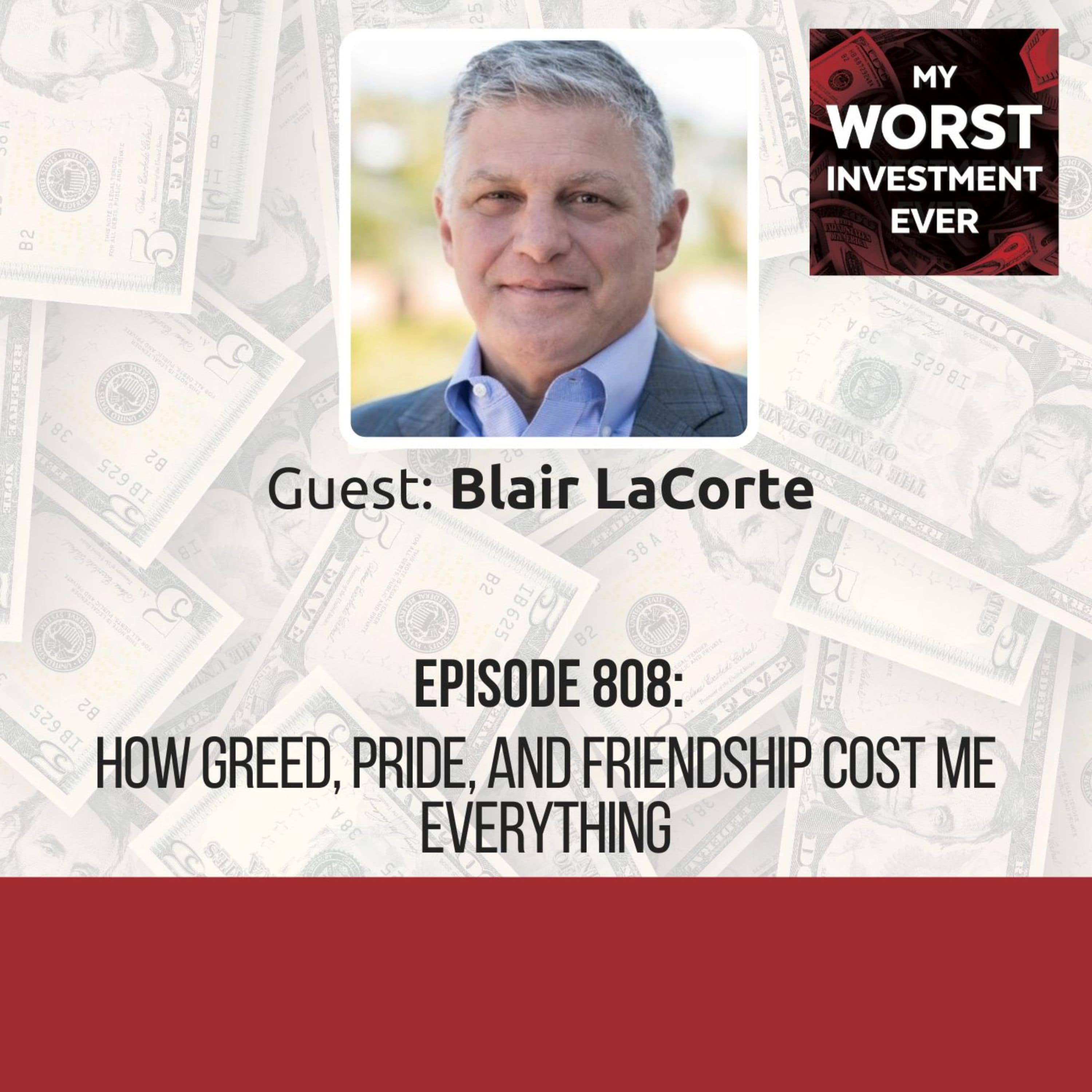
Blair LaCorte – How Greed, Pride, and Friendship Cost Me Everything
BIO: Blair LaCorte is a dynamic executive with experience across entertainment, aviation, AI, aerospace, consulting, and more.STORY: Blair shares three catastrophic investment failures and the life-altering lessons that rewired his approach to wealth.LEARNING: Chase knowledge, not hype, and don’t let greed hijack logic. Invest with friends only if you’re willing to lose both. “The worst investment that you can make is to put your time into something that you don’t enjoy or that you know is not going to work out.”Blair LaCorte Guest profileBlair LaCorte is a dynamic executive with experience across entertainment, aviation, AI, aerospace, consulting, and more. He has held CEO roles at companies such as PRG, XOJET, and Autodesk, and led startups to successful IPOs. Currently, he’s training as an astronaut for Virgin Galactic and is Vice Chairman at the Buck Institute.Worst investment everFresh out of college at 22, Blair met a smooth-talking investor who flaunted his “lifetime monthly checks” from an oil well. Blinded by dollar signs and zero industry knowledge, he poured his savings into a single well.Blair ignored basic due diligence, diversification, and warnings about low-quality reserves. It was all about greed. He had seen someone make money where they got paid every month for the rest of their life, as long as the well lasted.The greed kept him in and kept him investing in the well. At the end of the day, the oil was of below-average quality and was not as much as they thought it would be. Blair’s ignorance caused him a 100% loss. The well underperformed, and his greed trapped him in a sinking ship. Blair even commissioned a plaque to memorialize his shame—a daily reminder that “easy money” is a predator in disguise.Burning $200k and a friendshipAfter Blair’s first IPO success in 1999, his roommate pitched him on Coffee.com—a visionary play on single-origin beans (decades before it became trendy). Blair invested early, then panicked as losses mounted. When the roommate begged for more capital, he refused because he did not think it would succeed, but guilt kept him from cutting ties.After a while, the startup imploded. Worse? Blair’s friend never spoke to him again. He learned the hard truth from this unwise investment: mixing money with friendship is financial suicide.The $59.50 ego taxAt the peak of the dot-com boom, Blair had just scored a top-tier IPO. His broker urgently called and advised him to sell immediately at $59.50 as he believed the boom would not last. But pride convinced him that the broker was just chasing commissions.Blair held stubbornly as the stock bled out to $2. He lost $570,000 in vaporized gains. Blair’s ego had bet against reality, and reality won.Lessons learnedChase knowledge, not hype, and don’t let greed hijack logic. If you don’t understand how the money is made, you’re the exit strategy for someone else.Friends + money = atomic risk. Invest with friends only if you’re willing to lose both on the same day.Pride is the silent portfolio killer. The market doesn’t care about your ego, and exit signals don’t negotiate.Your time is your ultimate currency. Grinding your years into a dying venture to ‘prove a point’ is the costliest investment of all.Andrew’s takeawaysMacro trumps micro. Brilliant ideas fail if they’re too early or too late. Always ask: “Is the world ready for this?”Preserve capital like your life depends on it. A young you can risk time; an older you must protect capital.Passive high-risk bets (like an oil well) are gambling. Invest where you can influence outcomes.Actionable adviceWhen temptation knocks:Demand the “Why You?” clause. If a “sure thing” lands in your lap, ask: Why me? Why now? What do they know that I don’t?Map the macro weather by using tools like Google Trends, industry reports, and Fed data to pressure-test timing.Cap the bleeding by allocating a max of 5% of net worth to high-risk plays. Set automatic exit triggers (e.g., “Sell if -25%”).Sign contracts, define failure clauses, and never mix personal loans with equity, especially if investing with pals.Blair’s recommendationsBlair recommends checking out PPE Mastermind Talks (available for free at PPEmastermind.com) to learn business tactics from battle-tested CEOs. He also recommends reading biographies, examining companies’ histories, and watching documentaries or listening to speakers that prompt you to think differently about things, to accelerate your ability to learn.No.1 goal for the next 12 monthsBlair’s goal for the next 12 months is radical self-care. Blair wants to do things for himself without feeling guilty.Parting words “Go out there and have fun, it’s a privilege. Approximately 50% of the world’s population lives on a subsistence level. Another 25% don’t get to make the decisions. If you have the financial or mental capability to try new things, you’re blessed. So go out there and have some fun.”Blair LaCorte [spp-transcript] Connect with Blair LaCorteLinkedInFacebookWebsiteAndrew’s booksHow to Start Building Your Wealth Investing in the Stock MarketMy Worst Investment Ever9 Valuation Mistakes and How to Avoid ThemTransform Your Business with Dr.Deming’s 14 PointsAndrew’s online programsValuation Master ClassThe Become a Better Investor CommunityHow to Start Building Your Wealth Investing in the Stock MarketFinance Made Ridiculously SimpleFVMR Investing: Quantamental Investing Across the WorldBecome a Great Presenter and Increase Your InfluenceTransform Your Business with Dr. Deming’s 14 PointsAchieve Your GoalsConnect with Andrew Stotz:astotz.comLinkedInFacebookInstagramThreadsXYouTubeMy Worst Investment Ever Podcast
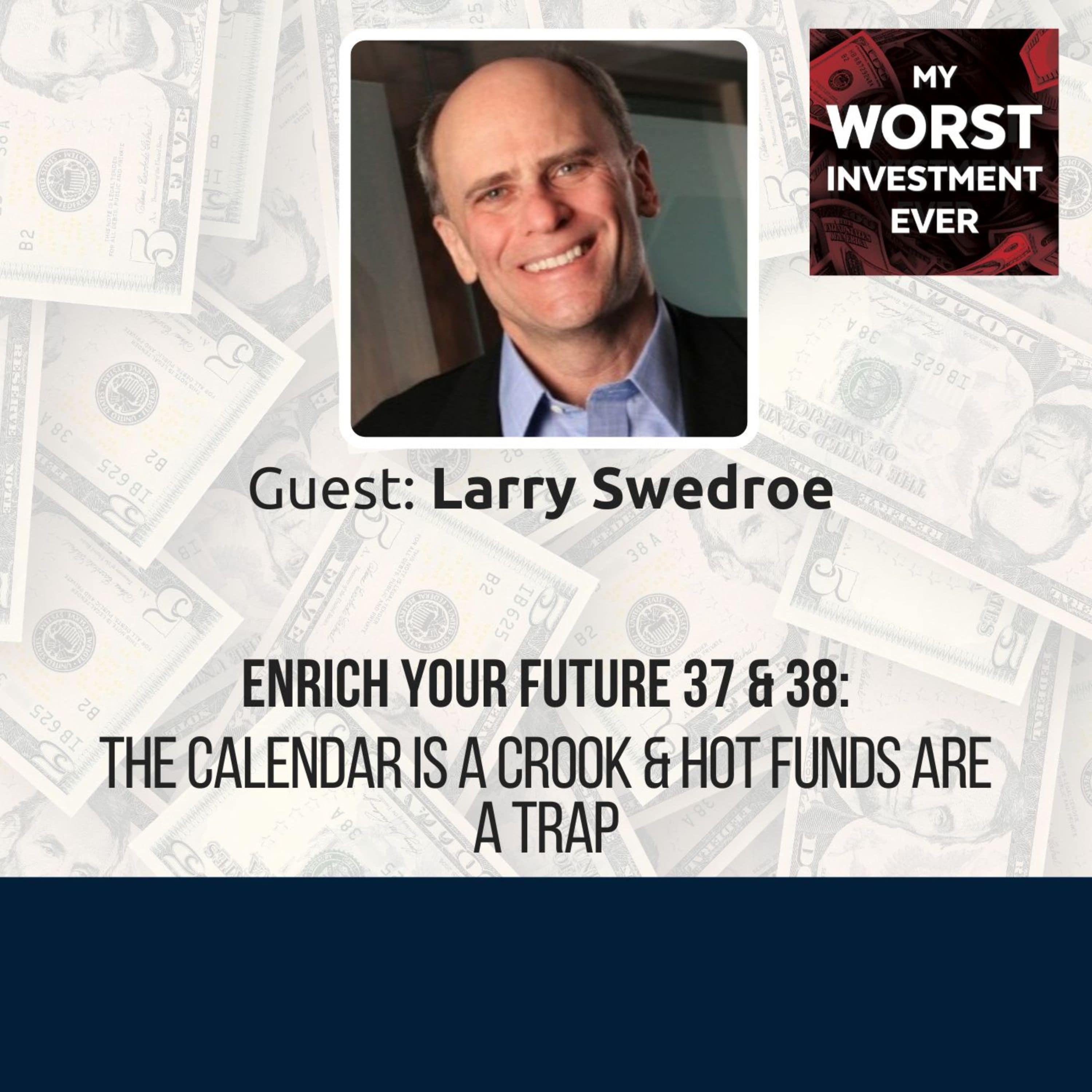
Enrich Your Future 37 & 38: The Calendar Is a Crook & Hot Funds Are a Trap
In this episode of Enrich Your Future, Andrew and Larry Swedroe discuss Larry’s new book, Enrich Your Future: The Keys to Successful Investing. In this series, they discuss Chapter 37: Sell in May and Go Away: Financial Astrology and Chapter 38: Chasing Spectacular Fund Performance.LEARNING: Calendars don’t drive returns. Winners ignore hot funds. “For you to believe in a strategy, there should be some economically logical reason for it to persist, so you can be confident it isn’t just some random outcome.”Larry Swedroe In this episode of Enrich Your Future, Andrew and Larry Swedroe discuss Larry’s new book, Enrich Your Future: The Keys to Successful Investing. The book is a collection of stories that Larry has developed over 30 years as the head of financial and economic research at Buckingham Wealth Partners to help investors. You can learn more about Larry’s Worst Investment Ever story on Ep645: Beware of Idiosyncratic Risks.Larry deeply understands the world of academic research and investing, especially risk. Today, Andrew and Larry discuss Chapter 37: Sell in May and Go Away: Financial Astrology and Chapter 38: Chasing Spectacular Fund Performance.Chapter 37: Sell in May and Go Away: Financial AstrologyIn chapter 37, Larry explains why the idea of selling stocks in May and switching to cash, then buying back in November, is not a sound strategy.What financial advisers insist on repeating, in Larry’s view, is: “Sell in May, go to cash, and reinvest in November.” It makes sense and is even logical. And, as the adage has it, numbers don’t lie. Figures, backed by reliable data, show that stocks gain more from November through April (a 5.7% average premium) than from May through October (a 2.6% average premium). So why not time the market?Busting the mythLarry dismantles this advice, revealing that the ‘Sell in May’ strategy, despite its apparent logic, is a myth. He points out that stocks still outperform cash even during the May to October period, with stocks beating T-bills by 2.6% annually.Selling stocks prematurely leads to missed gains, and the strategy of switching investments underperforms a simple buy-and-hold approach. In fact, a ‘Sell in May’ strategy yielded an average annual return of 8.3% from 1926 to 2023, while simply holding the S&P 500 returned 10.2%—a significant 1.9% yearly gap.Larry adds that Taxes and fees make the strategy worse. Trading converts long-term gains (lower tax) into short-term gains (higher tax). Transaction costs always pile up.Additionally, this strategy is rarely effective. Before 2022, the last “win” was 2011. A single outlier (2022’s bear market) does not make a strategy worthwhile.The fatal flawAccording to Larry, one of the fundamental rules of finance is that expected return and risk are positively correlated. So if stocks actually do worse than cash between May and October, they’d need to be less risky for these six months, which is absurd because volatility doesn’t take summer vacations.Why do people believe in this flawed strategy?Larry notes four reasons why people still believe in this flawed investment strategy:Recency bias: Media hypes the strategy after rare wins (like 2022).Pattern-seeking: Humans confuse coincidence with cause.“Free lunch” fantasy: Active investors crave simple shortcuts.The proper investment to followLarry’s advice is to:Ignore the noise. Calendars don’t drive returns.Stay invested. Missing just 10 best days in 30 years slashes returns by 50%.Focus on what matters: Diversification, low costs, and tax efficiency.Bottom line: The “Sell in May” strategy is a form of financial astrology. It confuses seasonal patterns with strategy. The market’s not a magic 8-ball. Stop gambling on folklore—and start compounding.Chapter 38: Chasing Spectacular Fund PerformanceIn chapter 38, Larry explains why chasing spectacular performance is not a prudent investment strategy.He starts the article by highlighting that 2020 was a phenomenal year for hot funds. During that year, 18 US stock funds posted gains of over 100%, attracting $19 billion in investor dollars in pursuit of recent performance. Their prior records seemed unstoppable—17 of 18 had reigned supreme over markets for three straight years.The brutal realityA landmark Morningstar study by Jeffrey Ptak looked into equity funds that gained more than 100% in a calendar year. He found that of the 123 stock funds that gained at least 100% between 1990 and 2016, just 24 made money in the three years following their phenomenal return.More adversely, the average fund subsequently lost around 17% each year. Ptak also found that funds that failed in the years before their big gain were far more likely to earn more money during the years after that big year, compared to money that had been profitable during the period preceding their big gain.Why do hot funds implode?There are a few reasons why hot funds could implode. One is overvalued bets. For instance, the 2020 superstars held stocks trading at 3x the valuation of the Nasdaq 100. Another reason is the reversion to the mean. Extreme returns are statistical outliers, not a result of skill. Lastly, the crowd effect. Inflows surge after gains, forcing managers to buy at high prices.The index fund quietly winsLarry observes that while speculators chased fireworks, Fidelity’s Total Market Index (FSKAX) returned 20.8% in 2020, beating 80% of active funds in its category. It did this with a 0.01% fee, 1/100th the cost of typical active funds.In conclusion, Larry reminds investors that the race to spectacular returns is a marathon, not a sprint. Winners ignore the fireworks.Further readingJeffrey Ptak, “What Happens After Fund Managers Crush It?” The Evidence Based Investor, January 18, 2001.Did you miss out on the previous chapters? Check them out:Part I: How Markets Work: How Security Prices are Determined and Why It’s So Difficult to OutperformEnrich Your Future 01: The Determinants of the Risk and Return of Stocks and BondsEnrich Your Future 02: How Markets Set PricesEnrich Your Future 03: Persistence of Performance: Athletes Versus Investment ManagersEnrich Your Future 04: Why Is Persistent Outperformance So Hard to Find?Enrich Your Future 05: Great Companies Do Not Make High-Return InvestmentsEnrich Your Future 06: Market Efficiency and the Case of Pete RoseEnrich Your Future 07: The Value of Security AnalysisEnrich Your Future 08: High Economic Growth Doesn’t Always Mean High Stock Market ReturnEnrich Your Future 09: The Fed Model and the Money IllusionPart II: Strategic Portfolio DecisionsEnrich Your Future 10: You Won’t Beat the Market Even the Best Funds Don’tEnrich Your Future 11: Long-Term Outperformance Is Not Always Evidence of SkillEnrich Your Future 12: When Confronted With a Loser’s Game Do Not PlayEnrich Your Future 13: Past Performance Is Not a Predictor of Future PerformanceEnrich Your Future 14: Stocks Are Risky No Matter How Long the HorizonEnrich Your Future 15: Individual Stocks Are Riskier Than You BelieveEnrich Your Future 16: The Estimated Return Is Not InevitableEnrich Your Future 17: Take a Portfolio Approach to Your InvestmentsEnrich Your Future 18: Build a Portfolio That Can Withstand the Black SwansEnrich Your Future 19: The Gold Illusion: Why Investing in Gold May Not Be SafeEnrich Your Future 20: Passive Investing Is the Key to Prudent Wealth ManagementPart III: Behavioral Finance: We Have Met the Enemy and He Is UsEnrich Your Future 21: Think You Can Beat the Market? Think AgainEnrich Your Future 22: Some Risks Are Not Worth TakingEnrich Your Future 23: Seeing Through the Frame: Making Better Investment DecisionsEnrich Your Future 24: Why Smart People Do Dumb ThingsEnrich Your Future 25: Stock Crashes Happen—Be PreparedEnrich Your Future 26: Should You Invest Now or Spread It Out?Enrich Your Future 27: Pascal’s Wager: Betting on Consequences Over ProbabilitiesEnrich Your Future 28 & 29: How to Outsmart Your Investing BiasesEnrich Your Future 30: The Hidden Cost of Chasing Dividend StocksEnrich Your Future 31: Risk vs. Uncertainty: The Investor’s Blind SpotPart IV: Playing the Winner’s Game in Life and InvestingEnrich Your Future 32: Trying to Beat the Market Is a Fool’s ErrandEnrich Your Future 33: The Market Doesn’t Care How Smart You AreEnrich Your Future 34: Embrace the Bear: Why Market Crashes Are Your Silent AllyEnrich Your Future 35: Market Gurus Are Just Expensive EntertainersEnrich Your Future 36: The Madness of Crowded TradesAbout Larry SwedroeLarry Swedroe was head of financial and economic research at Buckingham Wealth Partners. Since joining the firm in 1996, Larry has spent his time, talent, and energy educating investors on the benefits of evidence-based investing with an enthusiasm few can match.Larry was among the first authors to publish a book that explained the science of investing in layman’s terms, “The Only Guide to a Winning Investment Strategy You’ll Ever Need.” He has authored or co-authored 18 books.Larry’s dedication to helping others has made him a sought-after national speaker. He has made appearances on national television on various outlets.Larry is a prolific writer, regularly contributing to multiple outlets, including AlphaArchitect, Advisor Perspectives, and Wealth Management. [spp-transcript] Connect with Larry SwedroeLinkedInXWebsiteBooksAndrew’s booksHow to Start Building Your Wealth Investing in the Stock MarketMy Worst Investment Ever9 Valuation Mistakes and How to Avoid ThemTransform Your Business with Dr.Deming’s 14 PointsAndrew’s online programsValuation Master ClassThe Become a Better Investor CommunityHow to Start Building Your Wealth Investing in the Stock MarketFinance Made Ridiculously SimpleFVMR Investing: Quantamental Investing Across the WorldBecome a Great Presenter and Increase Your InfluenceTransform Your Business with Dr. Deming’s 14 PointsAchieve Your GoalsConnect with Andrew...
Create Your Podcast In Minutes
- Full-featured podcast site
- Unlimited storage and bandwidth
- Comprehensive podcast stats
- Distribute to Apple Podcasts, Spotify, and more
- Make money with your podcast
